The following article was published by Future Travel Experience
Meet the 10 executives on the FTE Airport Digital Transformation Power List Americas 2024, who have been recognised for their outstanding efforts to lead how their organisation has embraced digital innovation.
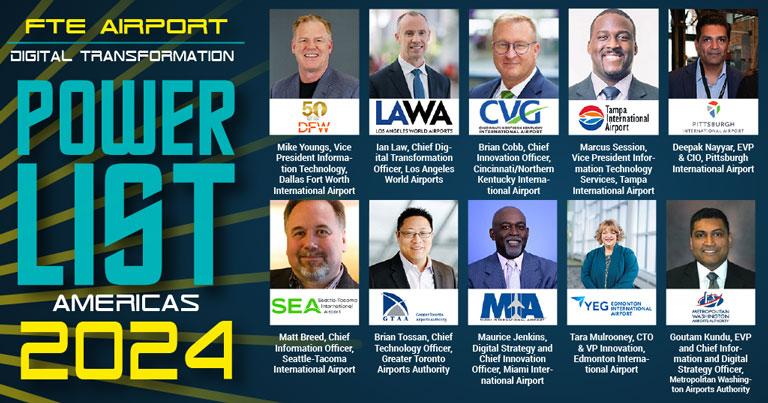
Future Travel Experience is excited to unveil the FTE Airport Digital Transformation Power List Americas 2024. Here we shine a light on those who are pioneering new approaches that have the potential to improve travel for passengers and make the industry safer, more efficient and commercially successful. The Americas edition champions the most transformative change enablers within the airline and airport industry in the Americas for their outstanding efforts to lead how their organisation has embraced digital innovation. In 2024, FTE is more committed than ever to supporting digital transformation efforts in the industry through the FTE Digital, Innovation & Startup Hub, which is a truly unique community designed specifically for the individuals and organisations who are at the forefront of digital transformation and innovation in aviation. The FTE Hub is focusing on three key themes this year – Artificial Intelligence (AI), Robotics, and Internet of Things (IoT) – and in alignment with that, the Power List recognises those that are leading key digital transformation efforts. In recognition of their leadership and achievements, each member of the Power List will receive a complimentary “Golden Ticket” to FTE Global – renowned as the “CES of Aviation” – taking place in Los Angeles on 28-30 October 2024. After extensive research into each candidate, we believe the following 10 executives have been at the forefront of innovation, driving transformational change for their organisations and the wider industry.
Mike Youngs, Vice President Information Technology, Dallas Fort Worth International Airport

Digital transformation is a key pillar of Dallas Fort Worth International Airport’s (DFW) ‘Travel. Transformed’ strategic plan, focusing on innovation with a collective goal to continuously reinvent the way it operates and to deliver new solutions to the airport’s customers and business partners.
Mike Youngs, Vice President Information Technology, leads the team progressively accelerating the adoption of digital technology. DFW is embracing innovation in areas such autonomous mobility, connectivity, Artificial Intelligence (AI) and Machine Learning. Among DFW’s myriad digital transformation initiatives are its ground-breaking digital twin project for the maintenance and operations of its renovated Runway 18R/36L and Terminal D, enabling the airport to make proactive, data-led decisions in real-time to meet its sustainability, efficiency and resiliency goals. The airport also launched a 1.0 version of an AI-powered digital human concierge named ‘Iris’.
Meanwhile, DFW recently partnered with Dallas-based AT&T to provide the airport with a comprehensive wireless platform that will enhance connectivity and critical infrastructure. The $10 million worth of upgrades to modernise and expand the network covering the airport will support airport operations and advance free public WiFi in the terminals. A private 5G network for the airport’s internal use will meet the rising demand for Internet of Things (IoT) use cases and the digitisation of airport operations.
Ian Law, Chief Digital Transformation Officer, Los Angeles World Airports

Los Angeles World Airports (LAWA) is in the midst of the biggest transformation project in the history of Los Angeles International Airport (LAX), in advance of the city hosting the 2028 Olympic and Paralympic Games, with the goal of making the airport an industry leader in technology, efficiency and guest experience.
The capital program is transforming the entire passenger experience from curb to gate and the team led by Ian Law, Chief Digital Transformation Officer, is playing a key role. Among the highlights are a $1.7 billion state-of-the-art 15-gate facility, the West Gates at Tom Bradley International Terminal; a $5.5 billion Landside Access Modernization Program (LAMP), comprising an automated people mover train system, consolidated rent-a-car facility, intermodal transportation facilities and new economy parking facility; and the Midfield Satellite Concourse (MSC) South.
In addition to all facilities that LAWA is modernising, it is rethinking the entire passenger process. A big part of that is the use of technology and what LAWA calls a digital marketplace. The concept behind the digital marketplace is that the customer will have the ability to control their journey even before they arrive at the airport through their mobile devices, incorporating amenities and services in a personalised manner. Passengers will be able to pre-book all aspects of their journey – from parking and food & beverage to virtual queuing at security checkpoints.
Brian Cobb, Chief Innovation Officer, Cincinnati/Northern Kentucky International Airport

The Cincinnati/Northern Kentucky International Airport (CVG) team, led by Chief Innovation Officer Brian Cobb, is recognised on the FTE Americas Airport Digital Transformation Power List for its progressive approach to robotics and automation, alongside its exploration of Artificial Intelligence and Machine Learning to help personalise the passenger experience.
The airport’s journey in the robotics space began in 2019 with the introduction of autonomous floor scrubbers and sweepers. It was also the first innovation team to bring Gita, a Piaggio Fast Forward following robot – like a drone from Star Wars – into an airport environment. The team uses the bots to assist in delivering traveller surveys or engage in ‘surprise and delight’ events. It has also brought Ottonomy, a goods delivery robot, into CVG. Most recently, the airport has this summer introduced Aurrigo’s autonomous baggage tractor, Auto-DollyTug.
CVG also collaborates with a broad range of startups through its Innovation Partner Program and is growing its innovation ecosystem by using its 7,700-acre campus as a living laboratory to test new proof of concepts and create new opportunities for its partners.
Marcus Session, Vice President Information Technology Services, Tampa International Airport
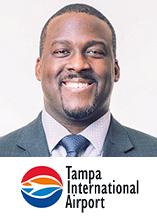
The Tampa International Airport (TPA) team, led by Marcus Session, Vice President Information Technology Services, has a strong commitment to innovation with a range of technological advancements aimed at redefining the travel experience. TPA’s forward-thinking terminal expansion, including the new $787.4 million Airside D which is scheduled for completion in 2027, has digital innovation at its heart. The airport’s commitment to innovation includes the integration of ground-breaking LiDAR and Artificial Intelligence (AI) technologies, as well as the deployment of additional e-Gates, set to enhance operational efficiency with the aim of transforming TPA into a benchmark for modern airport experiences.
Meanwhile, TPA’s latest advancements in baggage technology include the introduction of a sophisticated Checked Baggage Inspection System and the implementation of advanced cross-belt sorter technology, setting new standards in efficiency and security for baggage handling.
Deepak Nayyar, EVP & CIO, Pittsburgh International Airport
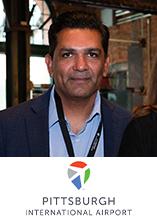
Pittsburgh International Airport (PIT) – located in the ‘Robotics Capital of the World’ – is a pioneer in the robotics and automation space and hosted the second FTE Aviation & Robotics Summit in May 2024.
PIT has completed several trials of various autonomous and autonomy-enabling technologies over the past two years. These trials have been confined to the terminal, parking lots, and other passenger-facing areas and it is now moving towards testing autonomous technologies on the airfield, prioritising below-wing functions and support. The airport is also actively pursuing trials of ecosystems of autonomous technologies.
As part of its collaborative approach to innovation, PIT last year launched a partnership with International Airlines Group (IAG) to explore exciting new solutions with the robotics and tech community. This has already seen them deploy Synaptic Aviation’s computer vision, opening up a wealth of new data. The cutting-edge technology uses Artificial Intelligence models for computer vision to monitor ramp operations via cameras stationed at a gate. They record everything that happens and feed it back to a workstation that can synthesise the data almost instantly into actionable information.
Meanwhile, PIT has also partnered with CLEAR to launch identity verification technology at the airport for a frictionless and predictable travel experience.
As EVP & CIO, Deepak Nayyar leads the PIT team driving the airport’s comprehensive digital transformation efforts.

FTE Global – renowned as the “CES of Aviation” – takes place in Los Angeles on 28-30 October 2024. Co-located once again with APEX/IFSA Global EXPO, it will be the networking opportunity of the year, ensuring you get the best of the airport and inflight realms under one roof. The inspirational conference agenda features presentations from a number of the leading airports listed here, including DFW Airport, CVG Airport, Los Angeles World Airports, Pittsburgh International Airport and Greater Toronto Airports Authority, plus many more speakers from inside and outside the industry.
Matt Breed, Chief Information Officer, Seattle-Tacoma International Airport

As Chief Information Officer, Matt Breed leads the team responsible for driving Seattle-Tacoma International Airport’s (SEA) digital transformation. SEA has been experimenting with Artificial Intelligence (AI) and Machine Learning for several years. It has, for example, deployed sensors that capture audio and use Machine Learning to determine when aircraft are running their auxiliary power units – this was done in conjunction with Microsoft and the University of Washington. SEA uses Assaia Apron AI to help optimise airfield operations and also has some prototypes for baggage hygiene, cargo operations, escalator safety, and crowd density analysis. The airport has also introduced Oscar – an AI waste sorting technology from Intuitive AI.
SEA is also exploring conversational AI and last year used ChatGPT to create the framework for an Aviation Technology Master Plan, with a focus on emerging aviation technologies. While the airport’s use of the technology is experimental at the moment, Breed is encouraging the organisation to familiarise themselves with ChatGPT and other emerging conversational AIs.
Other emerging technologies that SEA is either utilising or exploring to help further transform the passenger experience include private wireless to provide broad reach connectivity for its emerging Internet of Things (IoT) footprint, electrification, advanced analytics, and Augmented Reality/Virtual Reality.
Brian Tossan, Chief Technology Officer, Greater Toronto Airports Authority
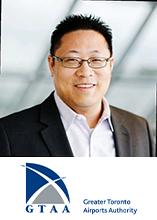
In his role as Chief Technology Officer, leading the team responsible for IT and innovation at Greater Toronto Airports Authority (GTAA), Brian Tossan serves as a driving force for technological advancement, pioneering new horizons in airport operations, and enhancing passenger experiences through human-centric solutions.
GTAA has launched Pearson LIFT – Long-term Investment in Facilities and Terminals (LIFT), a capital plan spanning more than a decade, investing billions of dollars into Toronto Pearson’s facilities. A key element of the program is digital transformation and establishing Toronto Pearson as a technological airport leader.
Indeed, GTAA is enhancing the passenger experience at Toronto Pearson with a suite of digital innovations. The airport has fast-tracked its modernisation plans by investing in innovative technologies that are already helping passengers navigate the airport more easily and quickly. Innovations and processes helping smooth the travel experience include contactless check-in and boarding; a partnership with the Canada Border Services Agency (CBSA) to deploy biometric e-gates; new digital technology at check-in, gates and baggage areas to replace the current generation of self-service tech; deployment of enhanced digital mapping tools to empower travellers with better information as they navigate the terminals; and an upgraded baggage system featuring Artificial Intelligence (AI) that anticipates overloading and detects potential breakdowns before they occur. Meanwhile, deploying a new customer-experience platform and dashboard will provide real-time analysis and insights on key customer sentiment metrics. This will give airport staff better insights, flag issues for airline partners, and address service issues faster.
Maurice Jenkins, Digital Strategy and Chief Innovation Officer, Miami International Airport
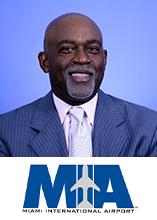
From curb to gate, Miami International Airport has been introducing cutting-edge technologies at each customer touchpoint, simplifying and streamlining the passenger journey. The team led by Maurice Jenkins, Chief Innovation Officer, has keenly adopted self-service technologies and encouraged airlines serving the airport to also embrace innovation. This strategic vision has successfully culminated in the integration of new technology in the opening of the new South and North terminals at Miami International Airport, as well as new system implementations such as biometrics, virtual queuing and other new innovating technologies.
Miami International Airport also sees vast potential in new digital identity approaches leveraging biometrics and how the sector can best utilise those opportunities. In addition to biometrics, the airport has trialled several innovations to enhance the passenger experience, including virtual queuing with the vision of full implementation, smart restroom trials, video analytics and Internet of Things (IoT) sensors for conveyances.
Tara Mulrooney, CTO & VP Innovation, Edmonton International Airport

As the CTO and VP Innovation, Tara Mulrooney leads the team responsible for innovation, technology and analytics at Edmonton International Airport (YEG). Her approach to IT includes converting strategic plans into tactical reality by leveraging people, technology and efficient processes. Mulrooney and her team are enabling the innovation expansion at YEG and building an information-based platform using the Internet of Things (IoT), messaging and data.
The YEG Master Plan 2048 includes a key principle of Innovative Airport Infrastructure – ensuring that future airport infrastructure is efficient and adaptable. Meanwhile, the terminal development strategy prioritises technology to enable greater flexibility and efficiency, as well as innovation to improve experiences for passengers and the airport working community. Plans include further implementation of common-use equipment and the introduction of new self-service check-in and bag drop technology.
YEG is also exploring robotics, autonomous vehicles and Artificial Intelligence, while developing a private wireless network.
Goutam Kundu, EVP and Chief Information and Digital Strategy Officer, Metropolitan Washington Airports Authority
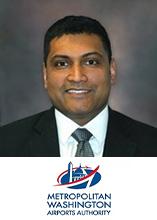
As EVP and Chief Information and Digital Strategy Officer, Goutam Kundu, leads the Metropolitan Washington Airports Authority (MWAA) team driving digital transformation efforts at both Dulles International and Reagan National airports.
MWAA has been on a journey of transformation during the past decade, largely driven by its technology innovation team, MWAA Labs. The team incubates, tests, implements and refines innovative airport solutions by using its two airports as sandboxes, with input from real customers and regulatory and airline partners in order to arrive at great products with great business models. MWAA Labs is continually exploring new technologies and approaches and specialises in areas across cloud services, mobile technologies, Artificial Intelligence (AI), deep learning, Internet of Things (IoT), digital display management, passenger flow and queue management, blockchain technology, and business intelligence, including predictive and prospective analytics.
The Airports Authority is working on projects centred around three core areas. The first revolves around creating a more seamless customer experience through solutions such as virtual queueing and queue management. The second area is creating a digital marketplace that brings all products and services into one centralised platform, ultimately providing customers with more choice to interact with the airport through their preferred digital channels. And lastly, the Airports Authority is exploring how it can use such concepts as a digital marketplace or virtual queueing to boost non-aeronautical revenue.
Article originally published here:
DFW, LAWA, CVG, TPA, PIT & more among FTE Airport Digital Transformation Power List Americas 2024
from Future Travel Experience https://ift.tt/Af1oHYc


Comments
Post a Comment